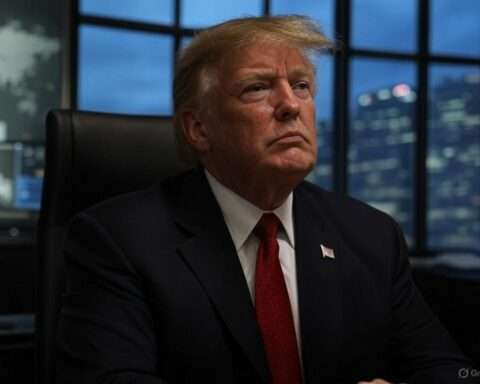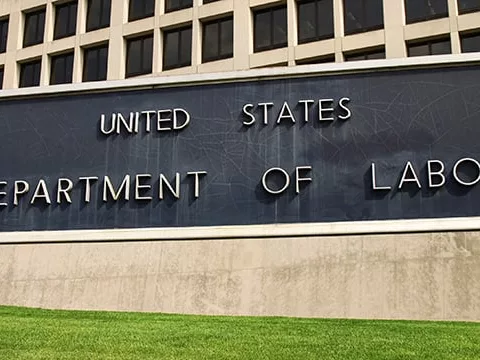The pandemic struck a global economy that already was profoundly unsustainable—socially, environmentally, even intellectually.
Over the past four decades almost all advanced economies have become more polarized, with increasingly unequal income distributions. Developing economies lifted billions of people out of poverty, but in the process they, too, created their own rising inequalities and social tensions.
The global economy’s lopsided growth has brought us to the edge of catastrophic climate change.
And political upheavals in one country after another meant the world could not expect to go on as before. This pressure for change was reflected in economic policy thinking that was rapidly challenging old orthodoxies about public spending, central banking, and government intervention in the economy.
Then the coronavirus brought the most dramatic societal disruption and economic collapse in peacetime memory. Greater policy shifts took place in days or weeks than the most ambitious politicians could have dreamed of achieving in a lifetime. The enormity of the crisis made unintended radicals out of many political leaders as they intervened drastically in economic activity and took the risks of both workers and businesses onto the state’s shoulders on a massive scale.
We are now far enough past the initial onslaught to lift our gaze to the future, even if the pandemic’s course remains uncertain. It is time to consider how current policy choices will—and how they should—shape the long-term path for the world’s economies. This year’s transformation of both the economic and political landscapes—what economic risks and rewards we can realistically foresee and what is newly considered politically possible—means that things will never be the same. But how they will change is wide open, and policy choices made over the next few years will make a big difference to whether the post-COVID world favors broadly shared prosperity more than the status quo ante.
Sharpened societal contradictions
The fundamental economic fact about the pandemic is that it intensified existing societal fault lines. The preexisting policy debates about them have intensified too.
Concerns about rising inequality have been given new fuel because lockdowns entailed much greater hardship for people in jobs that could not be done from home. White-collar jobs, especially knowledge-intensive ones, already were increasingly well rewarded relative to manual jobs—in terms of pay, but also job security and predictability. Workers in most manual service jobs—hospitality and tourism, delivery, retail, and basic care—had long been getting a rougher deal, which worsened in the pandemic. Because they require physical proximity, these are the jobs most exposed to either lockdowns (when judged nonessential) or contagion (when essential). Women and the young are hit particularly hard because they are overrepresented in many of these sectors, as documented in the IMF’s latest World Economic Outlook.
A second, related economic impact of the pandemic is an accentuation of the policy challenge from gig work and other irregular labor. It was already clear that in rich countries, nonconventional forms of employment and contracting were fitting ever less well with established welfare states. Informality continues to be an obstacle to developing safety nets in poorer countries. The lockdowns demonstrated the shortcomings of even well-developed state bureaucracies in reaching workers outside regular jobs. Politics and legislation often progressed at lightning speed to establish income-support programs, but the support sometimes failed to reach its target because governments could not identify the workers most in need.
Large, informal labor markets have long been a feature of poor economies. But the growth of a “precariat” of service workers—those with insecure employment and income and ill served by public services—is a principal reason why shockingly many people in the world’s richest countries have exceedingly thin financial buffers. Workers in sectors relying on low-paid and precarious work, hit disproportionately hard by the pandemic, were also less equipped to absorb such a shock to begin with.
Moreover, even unprecedented government steps to protect incomes have generally been insufficient to offset the disproportionate damage to those already worse off. As a result, the pandemic is likely not only to have reinforced chronic economic polarization, but to have intensified public awareness of it as a problem.
The economic fallout from the pandemic interacts with the underlying pressures of inequality in a third, less obvious, way. The sudden shift to remote working amounts to a steep change in business use of digital technology that is bound to affect production patterns and the distribution of economic surplus. While these effects may be hard to foresee, it is plausible that they could increase the productivity of those who already have the most “modern” jobs, intensive in cognitive skills and suitable for remote working. That could exacerbate the bifurcation of good and bad jobs.
The pandemic also played into political rifts over economic geography. Most obviously, it raised new questions over globalization—how interconnected countries can cope with contagion that spreads with travelers; with production disruptions from lockdowns in a global supply-chain manufacturing hub, as in Wuhan in January 2020; and with a sudden scramble for imported medical equipment.
Less obvious are the pandemic’s geographic effects within countries. Regional inequality has been one of the most toxic forms of economic polarization: starting about 1980, the post–World War II process of regional catch-up stagnated or even reversed as industrial jobs across national territories gave way to a concentration of knowledge services in their biggest cities. Now, while COVID-19 has spread in leading and declining cities alike, the economic disruption has temporarily changed how and where white-collar work is carried out—and could potentially be used by policymakers to alter permanently the geographic distribution of prosperity.
What is to be done?
For all these reasons, the pandemic is forcing policymakers to confront problems neglected for too long. But if things cannot go on as they were, the question remains, What policies should be implemented to change them and with what goals in mind? This is no easy question. The problems highlighted by the coronavirus crisis have defeated well-meaning attempts at improvement before.But if things cannot go on as they were, the question remains, What policies should be implemented to change them and with what goals in mind?
But two things seem clear. The first is that the nature and quality of work are central, and any reform program must focus on creating higher-quality jobs for more people in more places. The second is that it must be big in scope and scale—something with ambition and motivational power comparable to the New Deal or the Marshall Plan.
Work must be central because it is where many of the chronic and pandemic-related economic challenges intersect: inequality, precarity, and the new informality; geographic disparity; and technological change. A much greater availability of high-quality jobs is also the main common yardstick to measure the success or otherwise of a comprehensive range of policies.
What these policies should be is, of course, the big question, and one that ought to be democratically anchored. In my recent book The Economics of Belonging, I argue for a program that
Embraces productivity growth and the technological upgrade of jobs by demanding more from employers . It is when unproductive jobs give way to more productive ones that work becomes safer, more pleasant, and better paid. In the European Nordic economies, wage egalitarianism has spurred productivity growth by making low-productivity labor uneconomical and incentivizing investment in productivity-enhancing capital. This approach can be adopted elsewhere to combat chronic low-paid, low-productivity work in lightly and rigidly regulated labor markets alike (both the United Kingdom and France have their precariats, for example) and to direct the reallocation about to take place as COVID-19 makes some activities unviable. Concretely, this means ambitious minimum wage increases and strong and strictly enforced workplace standards.
Produces a high-pressure economy with strong demand growth to give productive firms reason to expand and ensure new jobs appear as bad jobs disappear. High demand pressure is necessary to benefit those on the margins of the labor market—the young, ill-educated, and minorities—who tend to be fired first in a recession and hired last in an upturn. Concretely, this means running macroeconomic policy “hot,” calibrating monetary and fiscal policies to keep demand always slightly ahead of the economy’s capacity, to encourage companies to pull more people into the labor force and seek productivity-enhancing improvements. This is admittedly more easily done in large, rich economies, especially reserve currency issuers—which also puts the onus on their policymakers to lead global demand growth.
Lowers the cost of leaving a bad job and finding a better one . This requires a panoply of policies, including greater spending on skills, well-resourced active labor market policies, and social security reform to untie benefits from jobs. Changing jobs and upgrading skills are costly for workers, and are not undertaken if people have low buffers to live on between jobs. Direct and unconditional payments, including a basic income or negative income tax to avoid low-income traps in the benefit system, are ultimately the only way to overcome these obstacles. They are also the most effective and quickest way to improve living conditions for the worst off, especially when more targeted approaches are unable in practice to reach those most in need.
Reforms tax systems to encourage high-quality work. This means shifting taxes away from labor to encourage job-switching and hiring. The tax revenue loss must be made up elsewhere. This requires that a greater tax burden fall on capital, ideally through a net wealth tax, which is more productivity-friendly than other capital taxes. In addition, carbon taxes should be significantly increased to reallocate labor and capital in a green direction. The proceeds should be redistributed as a “carbon fee and dividend” or “carbon checks.” Finally, international corporate taxation must be fixed to level the competitive playing field between multinational and locally employing firms, and to allow governments more room for maneuver in taxing capital.
Reforms financial systems and tax rules to be less favorable to debt and more favorable to equity-type funding, which is both more conducive to productivity growth and restores an appropriate balance of risk between workers and investors. Governments should convert COVID-related rescue loans to companies that struggle to repay into tradable equity stakes.
Incentivizes a broader geographic spread of the highest-value-added jobs . The goal of policy should be to make more places host a critical mass of high-paying jobs. This is easier said than done, but at a minimum requires greater investment in transport and IT connectivity, local infrastructure, and amenities to make places attractive to live in, and policies to make financing available for new ventures in declining areas. The change to remote working provides a promising opportunity to use tax or regulatory incentives to shift good jobs from large central cities to more remote locations.
Reinterpreting the world
All of this may seem a tall order. The devil will be in the details: implementing large-scale reforms depends on solving myriad trade-offs and logistical difficulties at the micro level. But the challenge our economies face is so big that incremental policies are unlikely to achieve much—and are easy for vested interests to defeat. So any program with a hope of success must be of great scale and broad scope. Given that enormous policy changes have already happened, that no longer seems unrealistic.The challenge our economies face is so big that incremental policies are unlikely to achieve much—and are easy for vested interests to defeat.
The old macroeconomic rules have been thrown out. Politicians who not long ago intoned about fiscal responsibility preside over record-breaking deficits, actively choosing to open the budgetary floodgates to sustain people’s incomes and companies’ liquidity.
The structure of public spending has also undergone a big shift, especially in countries with Spartan welfare states to begin with. The United Kingdom, in a matter of months, designed a European-style wage subsidy from scratch. The United States allowed people to lose their jobs, but sharply boosted unemployment benefits. And every advanced economy has put in place extraordinarily generous loan programs for businesses, in some cases taking all credit risk off banks’ hands. In many countries, the state is back in a big way, and this shift is qualitative as well as quantitative: governments are taking on risks previously borne by the private sector.
Some of these policy shifts are unprecedented. Others are an acceleration of preexisting trends. A reset of several fundamental premises for central bank policymaking had already emerged from the sluggish recovery after the global financial crisis. Central banks largely, if grudgingly, accepted mounting evidence that low interest rates are here to stay. The Federal Reserve, in particular, has embraced a greater tolerance for “running the economy hot,” no longer worrying that inflation might threaten as soon as unemployment comes down. Both shifts in thinking have helped central banks act early and comprehensively to sustain demand, cheap funding, and financial market functioning in the pandemic—a dovish shift in central bank thinking that is likely to continue.
Then there is the significant change in technology used by companies, which suggests that new remote work practices are here to stay. Surveys suggest that many companies plan to retain at least some work-from-home practices even after the pandemic. In any case, the technological and organizational know-how employers have had no choice but to accumulate at breakneck speed this year cannot be unlearned. It almost certainly will create permanent change in how people work.
And this holds not just for employers, but for consumption patterns. The pickup in online retail and substitution of online connectivity for physical travel are unlikely ever to be fully reversed, even if a vaccine eliminates the virus. A dramatic restructuring of the economy is underway.
These changes are easier to respond to in richer than in poorer economies. But there are opportunities even for lower-income economies. If nothing else, policy revolutions in rich countries will be a learning experience for the world and ought to affect the policy conditions attached to financial aid and debt relief for the poorest economies. And some developments provide direct opportunities for emerging economies: the embrace of remote working improves the prospect of attracting outsourced high-value-added service jobs.
Revolutionary questions
Ordinarily, policymakers can at most hope to tweak their governing systems. Mostly their job is to keep things running. At rare moments, however, leaders’ decisions help reset the course of their societies for a long time. This is such a moment.
Leaders now face three big questions about how they envisage their countries’ economic future.
The first is: reallocation or restoration? National economies have been knocked out of joint, leaving companies and workers uncertain about the future—whether a job viable before the pandemic will be again, whether a line of business is worth investing in or should be wound down. The nudge—or not—of policy can make a big difference to whether capital and labor shift into new activities or the allocation of economies’ resources retains its precrisis pattern. Even if COVID-19 makes some activities permanently less profitable, reallocation may not happen—or not to the necessary extent—without policies to promote it, because of the risk and uncertainty involved. Even if the existing economic model is broken, a new one will not build itself.
The second, more stirring, question is, “building back better or back to business?” There is a big difference between using the disruption to build something different and wishing to get things back on track as fast as possible. These two orientations lead to different policy considerations—roughly, whether to keep resource reallocation to the minimum necessitated by the pandemic or use the disruption to reengineer the economy more fundamentally. Building back better will demand more of businesses and people—for example, by doubling down on climate change goals or raising pay and work standards, using the dislocation to move to a different path. The alternative “back to business” approach will aim to make as minimal, quick, and painless as possible any adjustment economic agents have to undertake.
The final question is whether states are ready to once again embrace planning—using intervention to consciously shape the economy over time. Having a policy goal of sectoral reallocation, or regional convergence, or “building back better” presupposes some confidence in the ability of the state to coordinate and steer private sector behavior and a willingness to establish a desired destination. The loss of both confidence and will caused planning to fall out of fashion in the 1980s. As a result most governments today are neither used to strategic planning nor all that good at it.
Yet there are signs that planning is back. Climate change, geopolitical upheavals, rapid technological transformations, and now the pandemic have increased pressure on politicians to lead their economies to a better place, rather than simply freeing the animal spirits of the private sector. Even before COVID-19, economics and economic policy advice were becoming increasingly sympathetic to more active intervention to make economies work better.
Most leaders vow to “build back better” and to oversee a reallocation of resources to more COVID-safe, greener, and more productive activities. At least implicitly this entails a commitment to a more active and strategic state role in the economy than most have engaged in recently. Whether many states have the capability, or their leaders the temperament, to govern the economy more actively and more strategically than before, we are about to find out.
MARTIN SANDBU – is the Financial Times’ European economics commentator and author of The Economics of Belonging.






